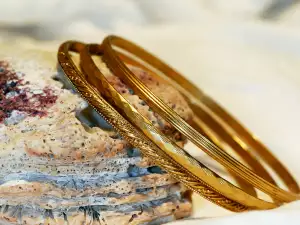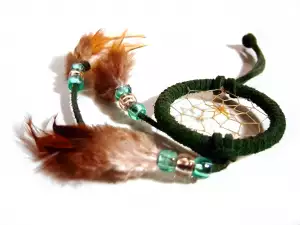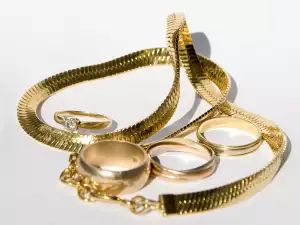The first bracelets date to around 2500 BC, worn by the Sumerians in South Mesopotamia. Bracelets, necklaces, ankle bracelets, rings and earrings allowed for Sumerian women to show off the prosperity of their husbands.
Bracelets were found for the first time in the tombs of Ur, where the custom was for royalty to be buried not only with their jewelry but also with their servants.
Up until around 2000 BC, bracelets were the main type of jewelry in ancient Egypt. Bracelets have been discovered in the ruins of Pompeii after the eruption of Vesuvius in the year 79.
During the time of the Egyptian pharaohs, the wearing of bracelets in the form of amulets was seen for the first time, even though they date back many years before that, to the Neolithic era, when men would gather unusual pieces of wood or stone which they would wear to ward off enemies. These decorations were seen as amulets and powerful protectors against evil.

In the time of the Egyptian pharaohs however, these decorations were combined to create pieces of jewelry such as bracelets for the wrist and neck, which were believed not only to offer protection but were also a sign of how wealthy and prosperous the person was in his lifetime, which after death would be an indicator to the gods for the appropriate status of this person in the afterlife.
In ancient Greece, bracelets were popular among men and soldiers, who wore leather bracers on their forearms, often decorated with gold, silver and precious stones. They are known as Bracels from the Latin Brachium, which means arm. Once the women of ancient Greece discovered that these bracelets looked fabulous on them, they began wearing smaller versions of them, called small Bracels or Bracel-ets.
The history of bracelets can be traced from the Middle Ages of medieval Europe, through the Baroque era of the 18th century up until today.

Throughout the different time periods, bracelets were crafted from different materials, such as leather, iron, copper, beads, teeth and bones, as well as from precious metals and precious stones.
Throughout the centuries, bracelets were also popular in various styles, whose variety depended on the style of dress. In cultures where the people wore short sleeves or clothing without sleeves, such as the Romans and ancient Greeks, the wearing of bracelets in both the lower and upper part of the arm was exceptionally popular among both men and women.
Today, bracelets are worn by men and women and are crafted from different materials, from traditional precious metals such as gold, silver and platinum, to the now modern plastics and acrylics, which are used to create unusual types of bracelets.
Materials such as titanium and zirconium are also used nowadays, having become popular because they are durable, very light and hypoallergenic.













